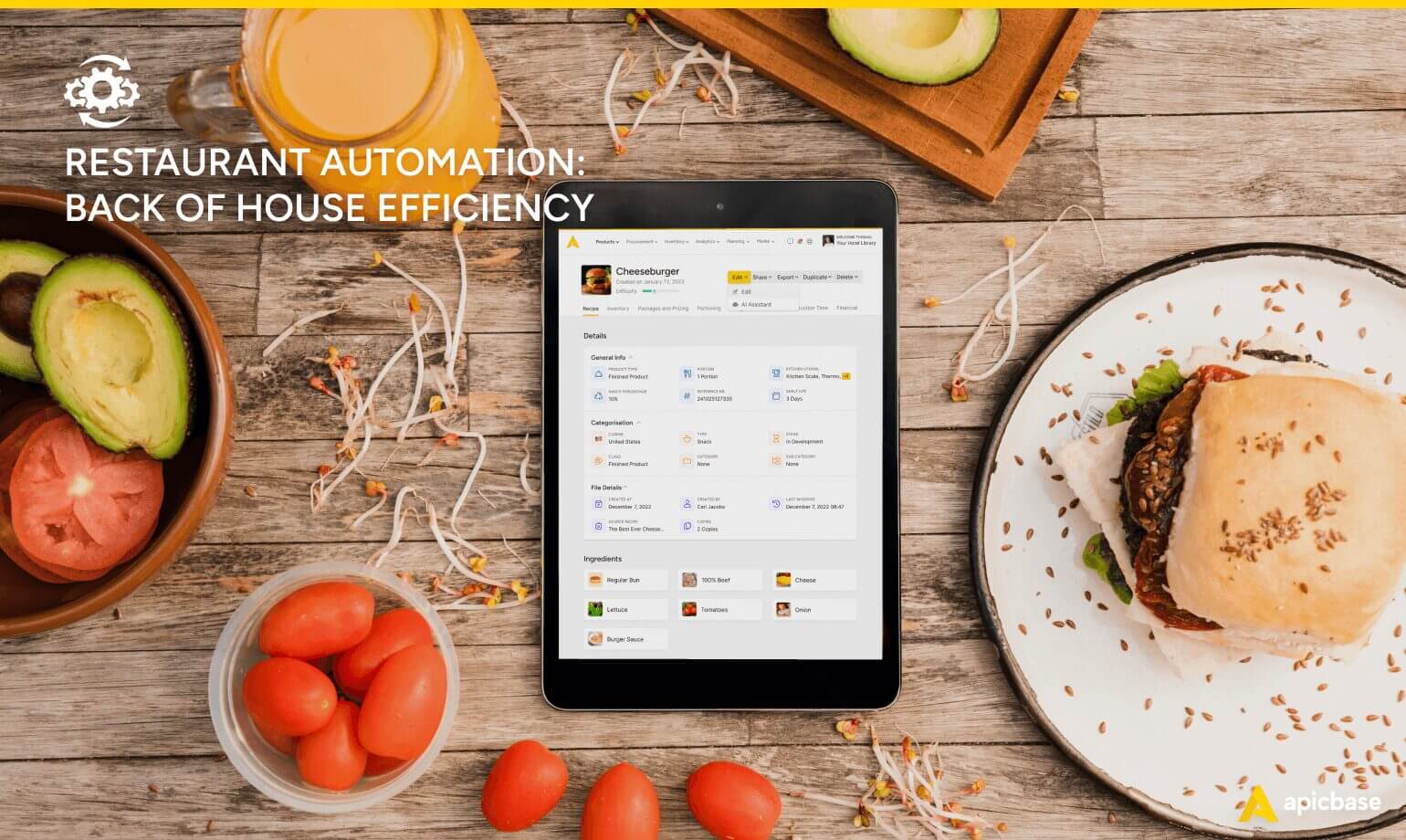When thinking about restaurant automation, imagining a future where AI-powered androids shake cocktails and drones drop food deliveries through your skylight is fun. But automation in food service is much more than that.
The 2024 Square Future of Restaurants report surveyed thousands of restaurant owners and customers across the United States, Canada, and the UK. 100% of restaurant owners said automation improved their businesses. And over half of respondents said they plan to spend more on technology and automation tools in 2024.
Restaurants use software and smart hardware to automate everyday tasks and management duties, such as purchasing ingredients, managing inventory, making production lists, dealing with allergens, and calculating costs.
These automations make the job more straightforward and improve efficiency, accuracy, and compliance. By processing your restaurant’s data in one place, they give you a complete picture of your restaurant’s financial health, allowing you to improve your margins.
What Is Restaurant Automation?

Restaurant automation is the use of technology to simplify and improve restaurant operations. By integrating software and hardware like POS systems and kitchen printers with back-of-house systems like accounting and inventory management software, restaurants can achieve greater efficiency, accuracy, and scalability.
Restaurant automation enhances every part of restaurant operations, from taking orders online and in the restaurant to recipe and production planning, staff management, and payroll processing.
What Back-of-House Processes Can Restaurants Automate?
Back of house (BOH) operations are complex and have many moving parts. From recipe management to inventory control and food production, there are opportunities to automate processes and improve efficiency everywhere.
Let’s examine how centralising your restaurant data using BOH management software saves time, reduces costs, and improves restaurant profit margins.
Production
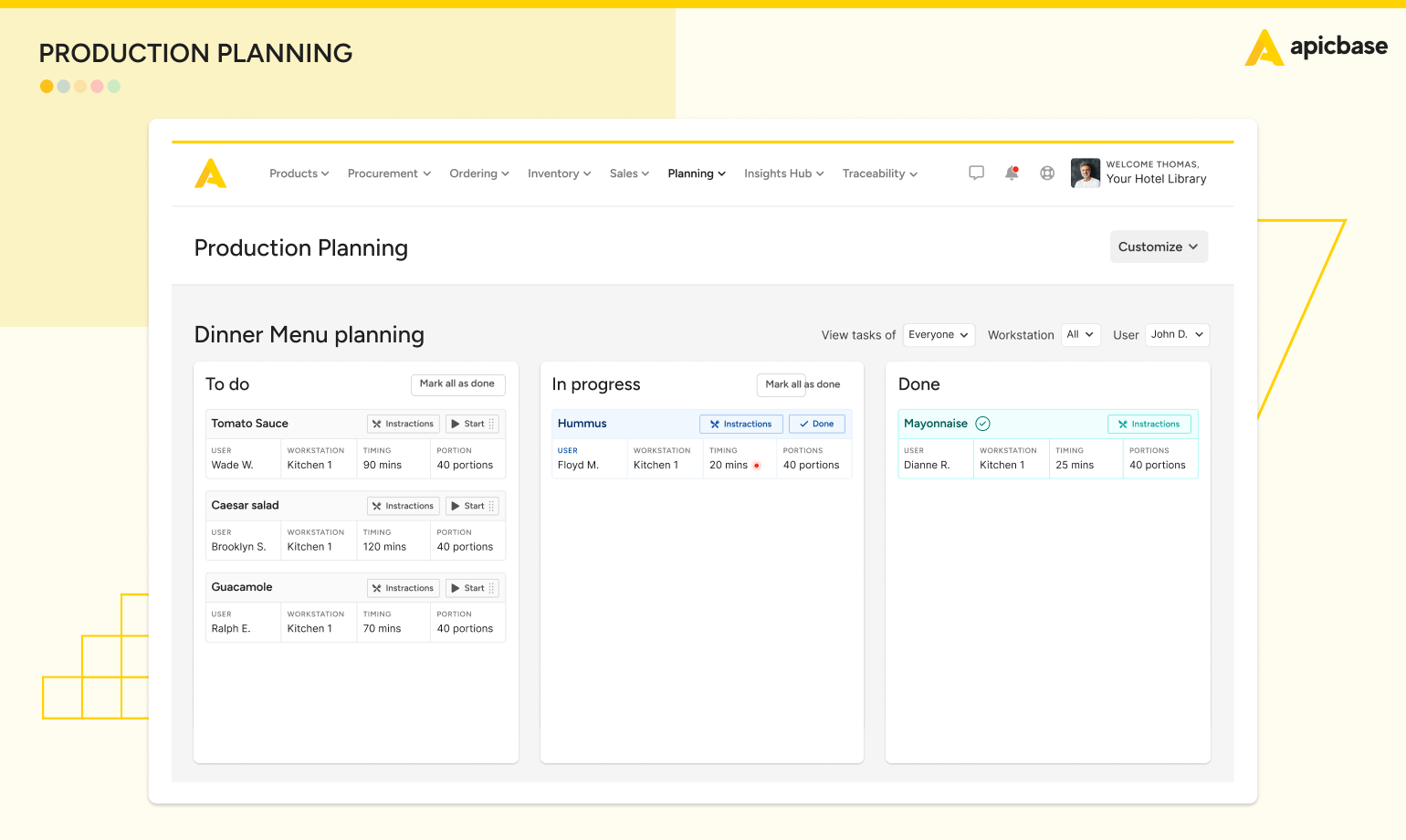
Production planning software transforms food production from a paper-based chore to a digital process. Using your recipe and inventory data, it produces fully calculated production plans, assigns tasks to specific staff members and workstations, and tracks progress in one place.
The best solutions offer end-to-end planning, ensuring food production runs like clockwork. Using your recipe data, they produce fully calculated production plans, assign tasks to personnel and workstations, and track progress in one unified system.
Production planning features built-in to your inventory and recipe management software are particularly valuable for large, multi-location restaurant businesses because they allow you to:
- Store detailed instructions for preparation and plating to achieve uniform results across all locations.
- Determine precise batch quantities based on actual demand, enabling more accurate food cost control and less waste.
- Create adaptable prep plans to meet local demands or apply standardised processes across the entire enterprise, with automatic suggestions for restocking based on current stock levels.
- Generate comprehensive production plans automatically for central kitchens, ensuring efficient order fulfilment from branch kitchens.
Menu engineering

Menu engineering software gives you the insights to analyse your restaurant’s menu and make improvements to increase profitability.
The most comprehensive solutions keep all your ingredients, suppliers, and pricing details in one place. It allows you to manage recipes and menus group-wide or tailor them to individual outlets.
You can build fully costed, portioned recipes complete with dietary information and ensure consistency with detailed instructions for prepping and plating.
The top solutions provide real-time recipe costing and automatically calculate food cost percentage and variance, helping you identify underperforming items and bring them into profitability.
A central database ensures consistency across all locations and allows staff to easily generate allergen labels and Nutri-score for dishes at the touch of a button.
Inventory management
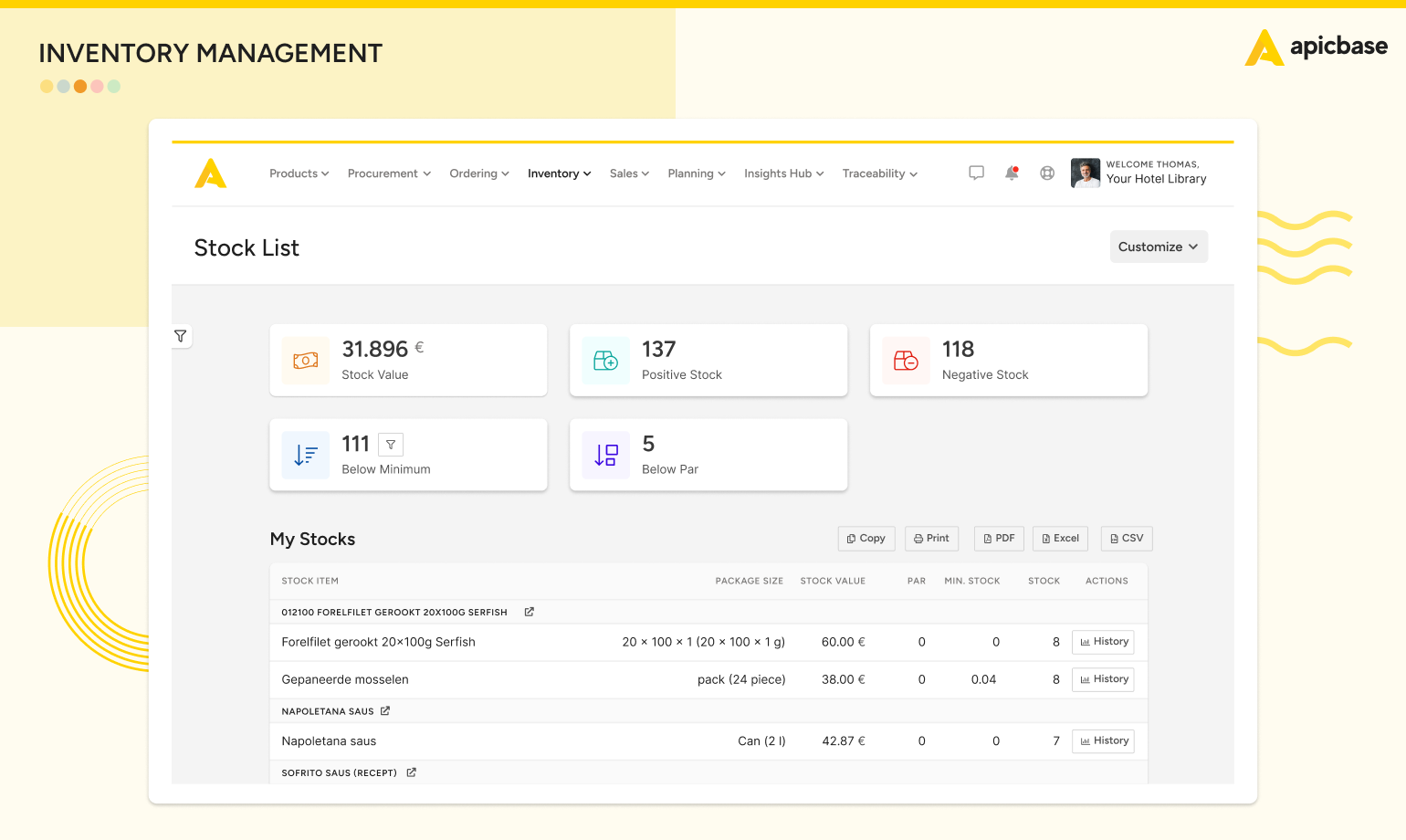
Inventory management software automates stock management for multi-unit restaurants, focusing on accuracy and efficiency. It can automate inventory tracking down to the raw ingredients, reducing the need for daily manual counts.
The most helpful inventory management systems integrate with your POS system to automatically update stock levels with every sale, ensuring accurate inventory data. This also allows the system to identify variances between actual and theoretical stock levels, aiming to reduce inventory variance to zero.
The latest systems allow staff to conduct stock takes on tablets, with all counts automatically logged. They can also convert bills of materials into purchase orders with one click, reflecting current inventory levels and needs.
Inventory management software makes monitoring cost and margin changes easy with real-time performance dashboards, offering a more precise picture than traditional profit and loss reports.
Procurement
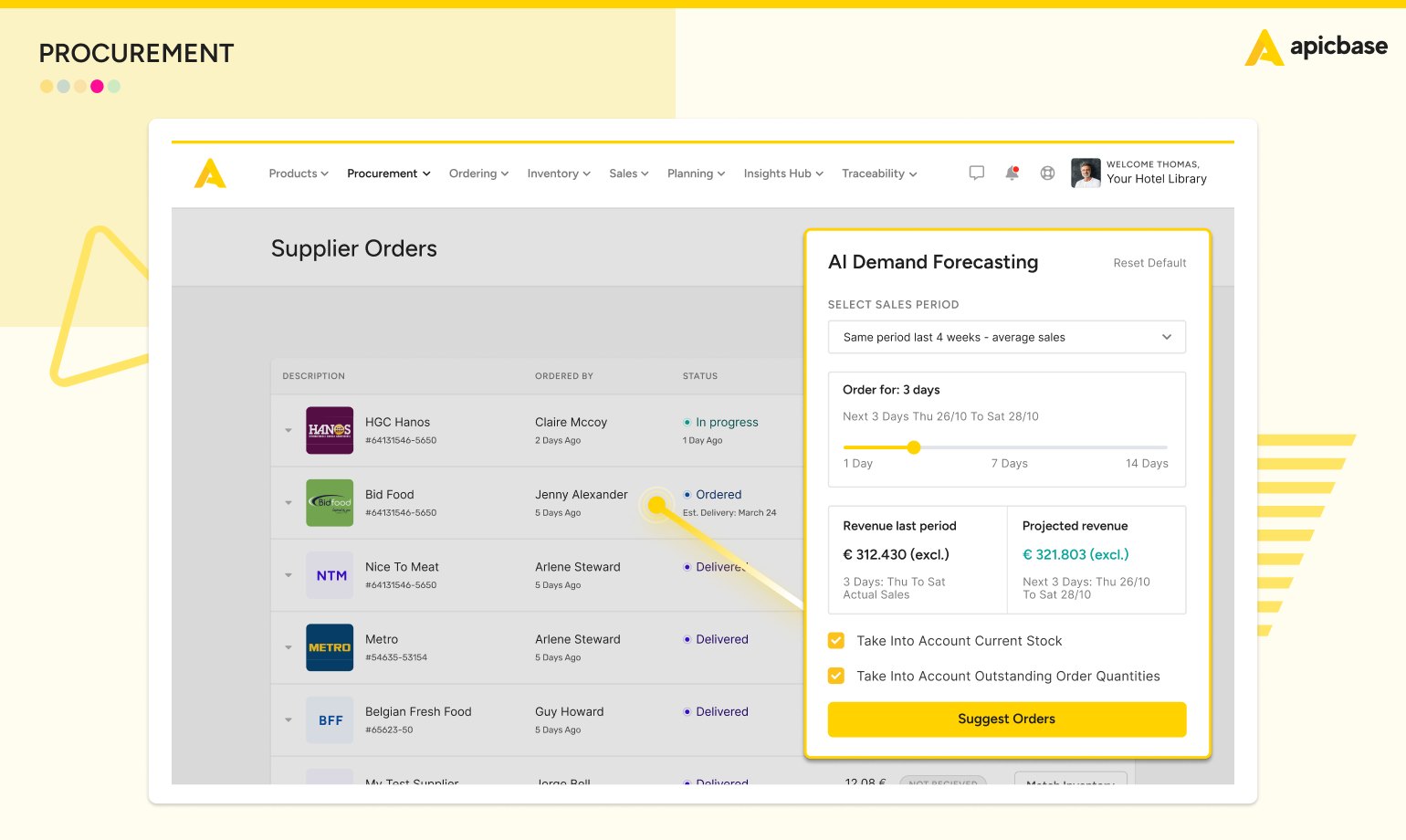
Procurement management software digitises purchasing for multi-outlet businesses for more efficient operations and improved margins.
The best systems combine all supplier interactions on one platform, allowing kitchen teams to place orders with real insights into stock and sales, eliminating guesswork and reducing overstocking.
With an integrated inventory and purchasing platform, you can generate procurement suggestions based on stock levels, demand forecasts, and supplier lead times, automating the purchasing process.
The software maintains transparency by keeping a complete record of the procurement cycle, from bills of materials to purchase orders, receipts, and invoices. It also promotes strong vendor relationships by storing all purchasing history and details in one accessible location, allowing for better negotiation and cooperation.
Traceability
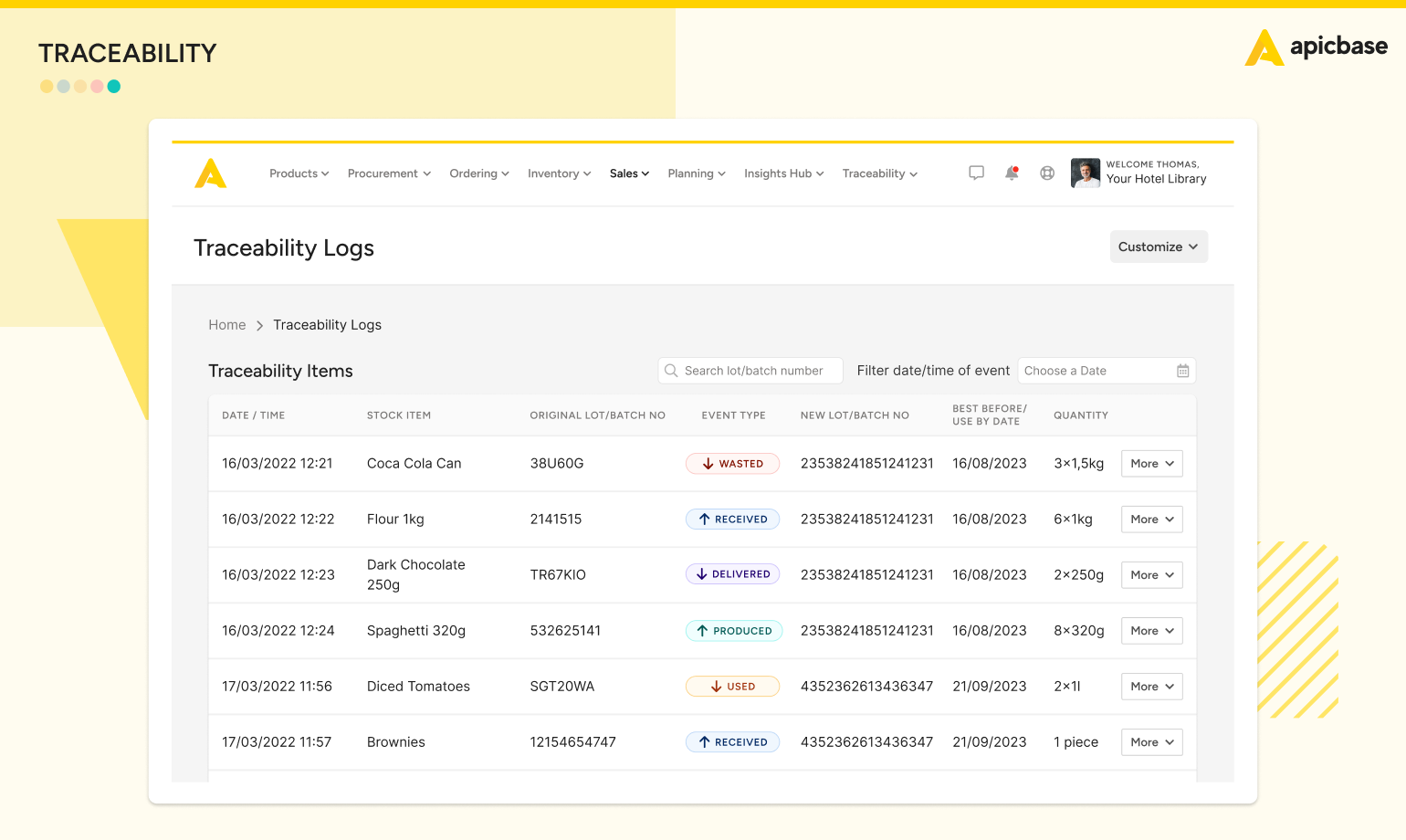
Traceability software helps track ingredients from source to delivery and improves regulatory compliance. More transparency in the supply chain helps avoid unnecessary recalls, which are damaging to your reputation and expensive to fix.
The best back-of-house restaurant software has built-in traceability features. These enable supply chain tracing down to individual ingredients by scanning their unique lot numbers. This deep knowledge of ingredients and products significantly improves food safety and accountability throughout the supply chain.
Back-of-house management software also provides the complete history, status, and nutritional details of every item in stock at the touch of a button.
Leading solutions, like Apicbase, provide a single source of truth for reporting. They allow restaurant managers to generate detailed digital traceability reports and document each ingredient’s journey from raw materials to the end client or restaurant.
Accounting
Restaurant accounting software automates financial processes and produces reports using your financial data. It automatically links purchase orders with corresponding invoices in the accounting software for faster validation, which ensures you pay only for goods received in good order.
The most comprehensive accounting software seamlessly shares sales data with other systems through dedicated APIs, synchronising the purchasing and financial tracking processes. This allows for three-way matching, where the software automatically matches purchase orders, delivery notes, and invoices for faster payment validation and approval.
The right accounting software integrated with your purchasing and inventory management system can automate many manual tasks. It reduces invoice processing costs by capturing early payment discounts and eliminating time-consuming data entry and validation delays.
What Front-of-House Operations Can Restaurants Automate?

Automation in the front of the house makes it easier for servers and customers to input orders into digital systems, speeding up the ordering process and reducing errors. Digital orders are sent to the back of the house seamlessly and without the risk of human input errors creeping in.
Point of sale system (POS)
The restaurant point-of-sale system is the hub of front-of-house operations, where servers input orders, take payments, and perform various management functions. Rather than taking pen-and-paper orders, the POS is the central point where orders and payments are processed digitally.
The link between the POS system and BOH technology is a vital part of successful restaurant automation. This integration allows data—including orders, sales numbers, and staff working hours—to flow to the BOH systems. Accounting software, inventory management, and production planning systems use sales data to automate functions in the BOH.
A POS system automates many restaurant management functions, including:
- Order input
- Payment processing
- Staff clock in and out
- Reservations
- Menu price updates
QR codes and digital menus
A QR code attached to a table or restaurant counter allows customers to access a digital version of your menu on their own device. They just have to scan the code to be taken to your site for online orders.
This simple innovation automates the entire ordering process without additional hardware for the restaurant.
Self-service ordering
Self-service ordering hardware allows customers to browse your menu, create an order, and pay from a piece of hardware in your restaurant. It is popular in quick-service restaurants, especially fast-food chains. Self-service kiosks and customer-facing counter screens usually have built-in touchscreens, contactless payment terminals, and ticket printers.
When a customer places an order and pays, a ticket is printed. Once their order is ready for collection, they present the ticket and collect the food.
Self-service kiosks require more investment than QR codes, but they entirely automate the ordering process and provide a convenient experience for the customer without taking up any staff time.
Phone answering
Automated phone answering is becoming more popular with the rapid improvement in AI-powered voice recognition and speech generation.
A smart voice assistant greets customers as the primary answering method or as a backup if your team is too busy. They can listen to queries and provide information such as opening times, wait times, and delivery areas.
The most innovative systems can even listen to customer orders, add them to the POS system, and take payments.
With many customers preferring to order over the phone, this technology frees your staff from the time-consuming task of answering the phone during a busy service.
Service robotics
Sushi restaurants have long used conveyors to automate food service. Now, service and delivery robots are serving food to customers.
As this technology improves and becomes more affordable, the possibility of a sit-down meal served entirely without human interaction is becoming a reality.
This is the most futuristic form of restaurant automation, and its practical benefits aren’t entirely clear. Self-ordering tech already cuts staff costs and dramatically speeds up service. It remains to be seen how widespread service robots will become.
The Benefits of Restaurant Automation

Restaurant automation brings a host of advantages to the modern food service industry. By integrating technology into daily operations, restaurants can streamline processes, enhance customer service, and achieve higher efficiency.
Let’s look at the most significant advantages of restaurant automation.
Reduce operational costs
Automated systems can handle routine tasks such as taking orders, managing inventory, and scheduling staff, which reduces the need for manual labour and lowers the chances of human error. This efficiency not only saves time but also significantly cuts down on costs associated with staff training and manual admin.
Minimise food wastage
Automation tools, particularly inventory management, can precisely track stock levels, usage patterns, and shelf life. This real-time data helps restaurants improve order accuracy, reduce over-ordering and overproduction, and ultimately reduce food waste.
Improving the efficiency of stock management and lowering food costs positively impacts your profit margins.
Improve the customer experience
Automated services like online reservations, digital ordering systems, and reservation management software improve the ordering and dining experience.
Customers appreciate the convenience of placing orders, making payments, and booking tables without waiting. Automation can also personalise the customer experience by remembering previous orders, preferences, and allergies, improving customer satisfaction and loyalty.
Increase profit margins
By reducing operational costs and food wastage while improving customer satisfaction, restaurants can significantly increase profit margins.
Automated reporting using your restaurant data also provides the insights needed to make informed decisions that boost profitability, such as optimising menu prices and improving marketing strategies.
What to Look for in Restaurant Automation Software
We’ve seen what restaurant automation software can do in the front and back of the house. Here are the top features in systems that automate restaurant operations.
Integrations
Look for software that has tried and tested integrations with other restaurant systems. Integrations allow your software to share data with other restaurant automation software in your tech ecosystem, unlocking more features and opportunities to streamline processes and capture relevant data in the front and back of house.
Here are the critical systems to integrate with:
- POS systems – Allows you to easily collect data about sales volume, customer preferences, and the most popular dishes on the menu. It also sends tickets to the kitchen digitally to minimise errors.
- F&B management platform: This tech unifies and manages your recipes, suppliers, inventory processes and restaurant unit performance all in one place.
- Accounting software – Shares financials with the rest of your restaurant systems
- Nutritional information providers – Connect with nutritional databases to automate nutritional calculations and allergen warnings.
- HR software – Access payroll and staff management features
Internal ordering automation
Large multi-location businesses often struggle to track stock item transfers between locations accurately. They may also use central production kitchens that send semi-finished products to multiple outlets.
The best inventory management software enables multi-location restaurant businesses to manage internal ordering centrally and track stock transfers end-to-end.
By centralising all your inventory data, these systems allow staff to track deliveries between sites, ensure consistent production, and maintain quality control.
Analytics
Accurate data is the key to tweaking your menus and recipes for maximum profitability, and optimising inventory management Software with real-time sales and cost reports equips your teams with the data they need to engineer menus to perfection.
The best sales analytics tools let you get granular with detailed reporting by categories, whole menus, or menu items. They also allow you to see the bigger picture with insights across locations and business areas.
API
APIs, or application programming interfaces, allow different software to share data to create a more powerful system. Look for software with robust APIs that won’t break and let you down in the middle of service.
APIs link your POS system to your inventory management, recipe management, accounting software, and more. This allows each system to access real-time data and automate processes accurately and efficiently.
These integrations allow you to create a best-of-breed ecosystem for smooth data-sharing and interoperability.
Scalability
Whether you’re a small ghost kitchen or a large established restaurant chain, choose software that can grow with your business. A scalable solution lets you select the features, number of locations, and number of users you need. You can add more as you grow.
Large businesses have hundreds or thousands of employees who access the system daily from different locations. In this situation, you need a solution with extensive accessibility options that allow you to set permissions for different levels of users. This ensures staff members can only access the features and information they need to do their jobs.
A flexible platform allows you to:
- Add new units to the platform as you expand
- Add a central production kitchen and track internal orders
- Flexibly integrate with suppliers depending on the location
- Control access levels depending on someone’s role in the company
- Work with tech partners that maintain the strictest security standards
HACCP task management
Look for a cloud-based system that can handle HACCP management across locations. Set the standards you demand from your teams with a digital system that makes it a breeze to comply with regulations and pass audits.
Given this is a daily chore for your teams, you’ll want an easy-to-use interface for planning, monitoring, and documenting HACCP tasks. With a robust digital system, monitoring each location’s performance is as easy as checking a dashboard.
Real-time dashboard insights
Restaurant analytics software with access to all your data and real-time insights allows you to monitor performance across outlets – from inventory counts and food cost calculations to procurement and sales insights. The tech provides a single source of truth for all things F&B across all units. It removes spreadsheets and disjointed apps from the processes.
With a single source of truth, you can consolidate data from various locations and tools to identify anomalies and areas of improvement. A complete system like Apicbase centralises everything. The dashboards instantly point to the areas that need attention. It saves you many hours weekly and rules out human errors in capturing, sharing, and interpreting data.
Boost Performance With Apicbase’s Restaurant Automation Software
The best way to experience the power of restaurant automation is to see it in action.
Apicbase stores all your recipe and inventory data and automates hundreds of manual tasks to improve efficiency and increase margins.
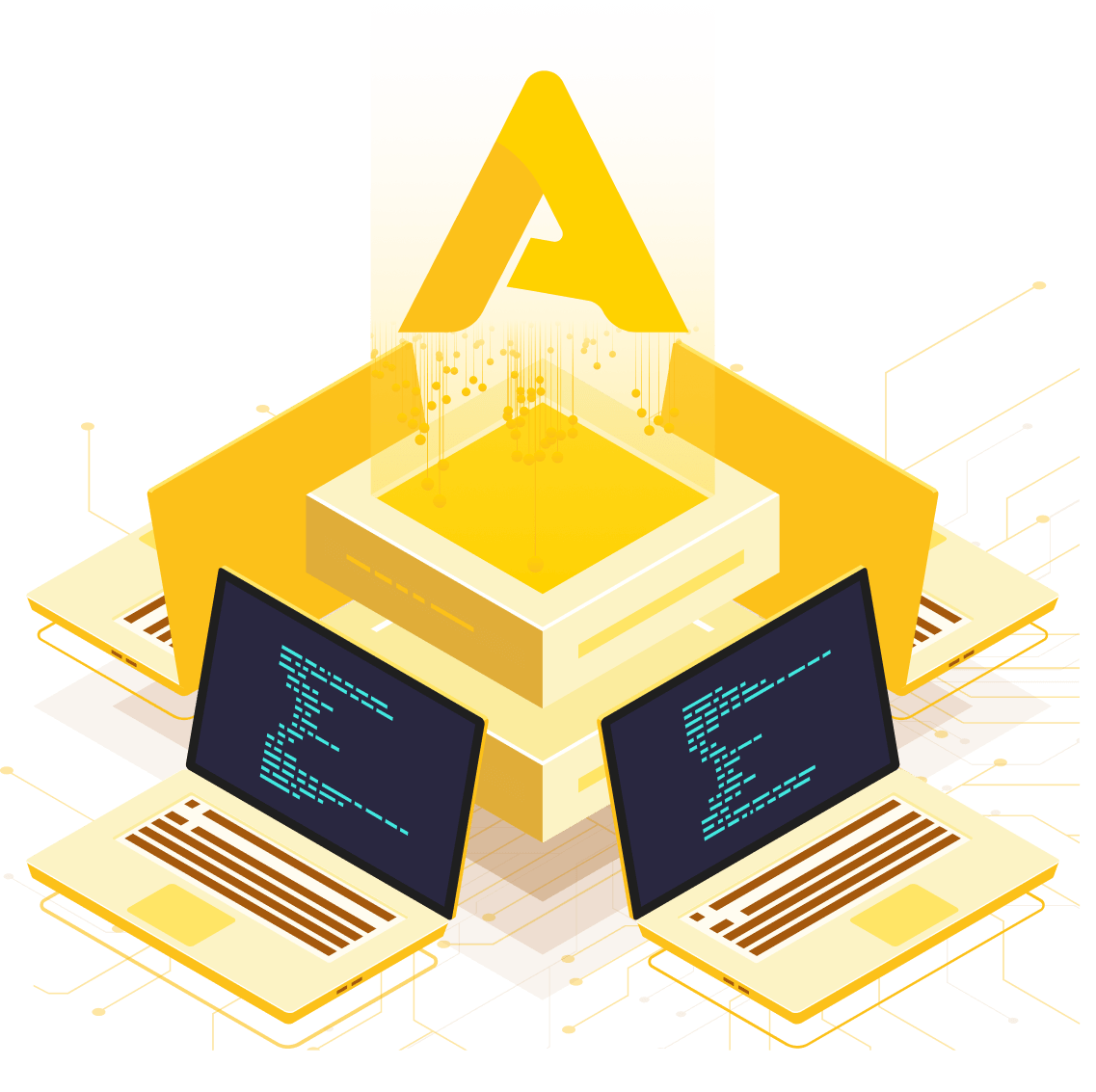
Streamlined Operations through Seamless Integration
Apicbase integrates with POS systems, supplier orders, and other restaurant systems. It is the most complete restaurant management hub, providing the insights your teams on location and at HQ need to make better decisions.

